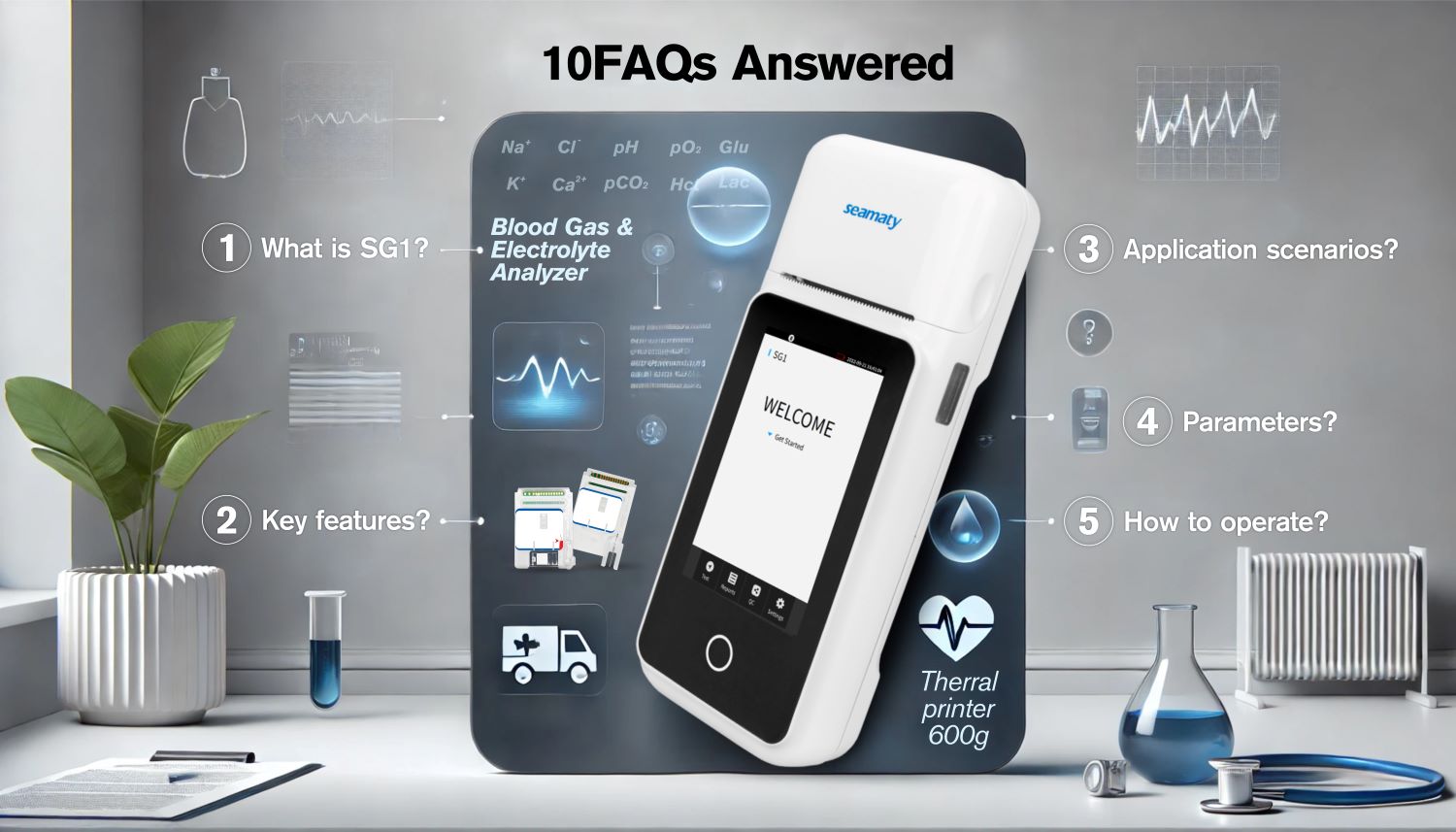release time:2024-11-26 14:08:10

The Seamaty SG1 is revolutionizing point-of-care testing with its portability, ease of use, and rapid results. To help you understand this innovative blood gas analyzer better, we’ve compiled answers to the top 10 frequently asked questions about the SG1.
The Seamaty SG1 is a handheld, portable blood gas analyzer designed for fast and accurate results. Weighing only 600g and equipped with a long-lasting battery, it delivers critical blood gas, electrolyte, and biochemistry information at the point of care in just 4 minutes.
The Seamaty SG1 offers several unique features:
The Seamaty SG1 covers a wide range of parameters:
The Seamaty SG1 is more cost-effective, portable, and user-friendly. It requires smaller blood sample volumes (100μL) and eliminates the need for reusable cartridges, reducing maintenance and calibration efforts. Additionally, its high-definition interface ensures a seamless user experience.
The Seamaty SG1 offers several cartridge options to suit different clinical needs:
The Seamaty SG1 is versatile, making it ideal for:
Warm Up the Cartridge: Let the refrigerated cartridge stand at room temperature for 20 minutes.
The cartridges have a shelf life of:
7 months at room temperature (10–30°C).
12 months when refrigerated (2–8°C).
With its rapid results, bedside operation, and minimal sample requirements, the Seamaty SG1 enables healthcare professionals to make timely decisions, improving outcomes in critical situations.
The Seamaty SG1 is compact, cost-effective, and easy to use. It delivers accurate results quickly while reducing costs, making it an excellent choice for hospitals, clinics, and emergency care providers.
The Seamaty SG1 blood gas analyzer sets a new standard in point-of-care testing, offering convenience, accuracy, and efficiency in one compact device. If you’re looking for a reliable and portable solution, the SG1 is the ideal choice for your medical needs.
Have more questions about the Seamaty SG1? Contact us today to learn more!
1. From Novice to Pro: Mastering the Seamaty SG1 Blood Gas Analyzer
2. Handheld Blood Gas Analyzers Comparison: Abbott i-STAT vs. Siemens EPOC vs. Seamaty SG1
3. Seamaty SG1 Blood Gas Analyzer: A Must-Have for Small Clinics
4. 50 Seconds Ultra-Fast Blood Gas Testing: The SG1 Handheld Blood Gas Analyzer
5. Measured Parameters and Application Scenarios of SG1 Blood Gas Electrolyte Analyzer
6. Blood Gas Analyzer: An Indispensable Medical Tool from the ICU to General Wards
7. Wet vs. Dry Blood Gas Analyzers: Which One Takes the Lead?
8. Blood Gas Analyzer Buyers’ Guide: Top Picks from Leading Chinese Manufacturers

2024-09-03
Learn about the Seamaty SD3 Fully Automated Dry Chemistry Analyzer in this comprehensive guide. Discover its unique fan-shaped reagent disks, accurate results, and ease of use. Explore 12 frequently asked questions to understand how the SD3 can benefit healthcare professionals.

2021-11-04
Microfluidic chip technology is the cornerstone of biochips. It integrates the processes involved in sample pretreatment, biochemical reactions, sorting and detection in the fields of chemistry, biology and medicine into a few square centimeters of chip through multidisciplinary intersection.

2021-10-13
Chemiluminescent immunoassay, as an important technical tool for in vitro diagnostic testing technology, emerged in the mid-1970s. Nowadays, chemiluminescence immunoassay has become a mature and advanced technique for the detection of ultra-micro-active substances. It has a wide range of applications.